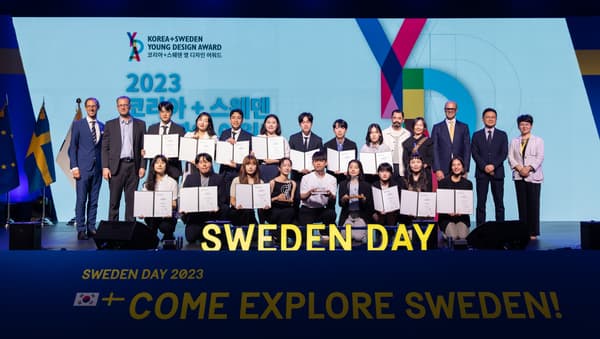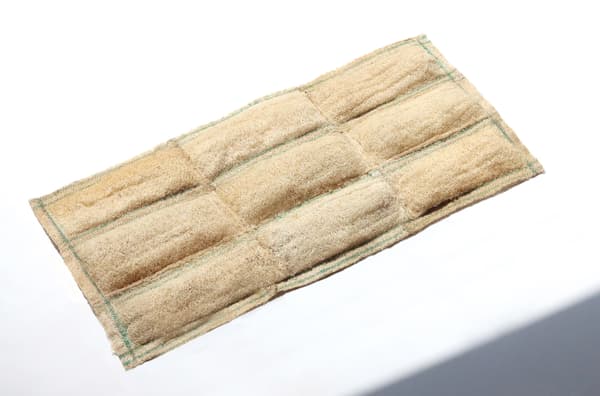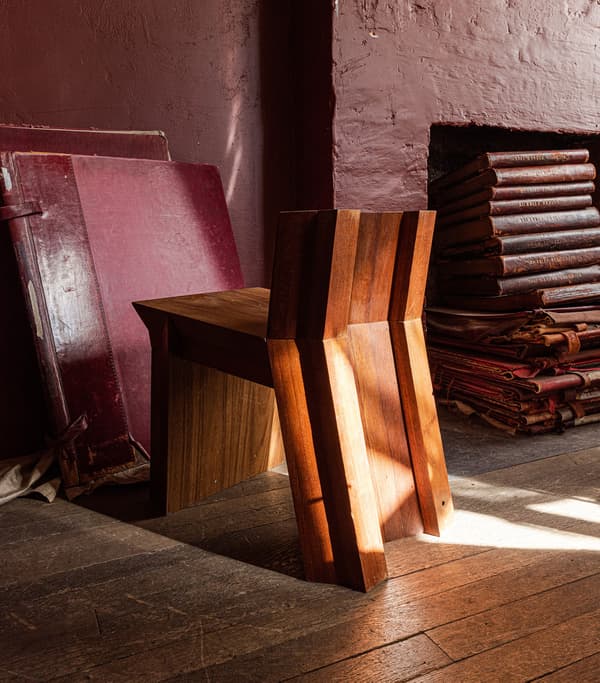‘2023 Korea+Sweden Young Design Awards’ Ceremony Held

-Providing opportunities for next-generation designers to grow, such as a design tour to Sweden
[Seoul – June 12] IKEA Korea, the Embassy of Sweden in Seoul, and the Korea Institute of Design Promotion (KIDP) held the ”Korea+Sweden Young Design Awards” ceremony on June 9, with Kim Yeji (”Luffa Step”), Seol Subin (”Remembrance”), and Park Kyeongho (”Oyster buoy”) announced and awarded as grand prize winners.
Marking its 4th year this year, the Korea+Sweden Young Design Award was planned to activate exchanges between Korea and Sweden further through design and to increase interest in the field of design. Since 2019, the three partners have held contests based on the three core values of ”innovation,” ”sustainability,” and ”better future,” taking the lead in discovering and developing designers in Korea and encouraging exchanges among them.
The theme of this year’s contest is ”Sustainable and Enjoyable,” and the submitted works were judged by an 11-person committee including Swedish design experts and opinion leaders based on creativity, aesthetics, topical relevance, and influence. Through this, three works that showed the power of design to create a better future by interpreting sustainability in a pleasant, novel way were selected as the grand prize winners.
At the awards ceremony held on the 9th, a total of 17 winners, including the grand prize winners, attended. The winners are given various opportunities to develop their creativity and become global next-generation designers, such as a design tour in Sweden. The awards ceremony was held together with the Swedish Day event held every year by the Swedish Embassy in Seoul to celebrate the Swedish national holiday, making it even more special.
”While the importance of sustainability for people and planet is gaining international attention, the ideas and passion of young designers who expressed sustainability through creative and active designs were impressive,” stated Fredrik Johansson, Chief Executive Officer (CEO) of IKEA Korea. ”IKEA will continue to support many Korean designers who are full of potential so that they can spread their inspiration for a better future.”
Ambassador of Sweden Daniel Wolvén stated, “Sweden and Korea are well-known internationally for their creative endeavors in both design and fashion.” He continued, “With this year’s theme being Sustainable and Enjoyable, I was curious to see how that creativity could be combined with sustainability. The results were extremely impressive and exciting, and I want to congratulate all the creative young Korean designers for their efforts.”
”Sustainability for a better future and a better environment is a value that all designers must consider, and adding the theme of enjoyment to this, this contest has become an opportunity for young designers to increase their interest in sustainability,” said Yoon Sang Heum, President of the KIDP. ”We will continue to contribute to the development of design and realization of social values in both countries through design exchange and cooperation between Korea and Sweden.”
Winning works in the 2023 “Korea+Sweden Young Design Awards”

Kim Yeji – “Luffa Step”
“Luffa Step” is a shoe mat made of fibers from natural Luffa. Unlike existing polyester-made shoe mats that have the disadvantage of generating microplastics, Luffa Step is made of sustainable, eco-friendly materials to prevent environmental pollution. In addition, as it is composed of fiber, it has the advantage of quick-drying and lightweight, and the sense of volume that occurs when multiple layers are stacked after using it for a long time provides a unique pleasure to the user.

Seol Subin – “Remembrance”
“Remembrance” is a chair made from recycled wooden handrails from a demolished oil refinery. When making furniture by recycling construction waste, the environmental effect of producing new materials is minimized. In addition, it has the meaning of making people feel anew the history and beauty of the existing building, which was used as material for furniture.

Park Kyeongho – “Oyster buoy”
“Oyster buoy” was produced by replacing the plastic buoys used in the marine industry with oyster shells. Even if it is damaged during use and it can no longer function as a buoy, it sinks into the sea and provides a place for marine life as an artificial reef. In other words, oyster shells become the material for this buoy, which then becomes an artificial reef to provide a habitat for marine life; thus creating a sustainable virtuous cycle.